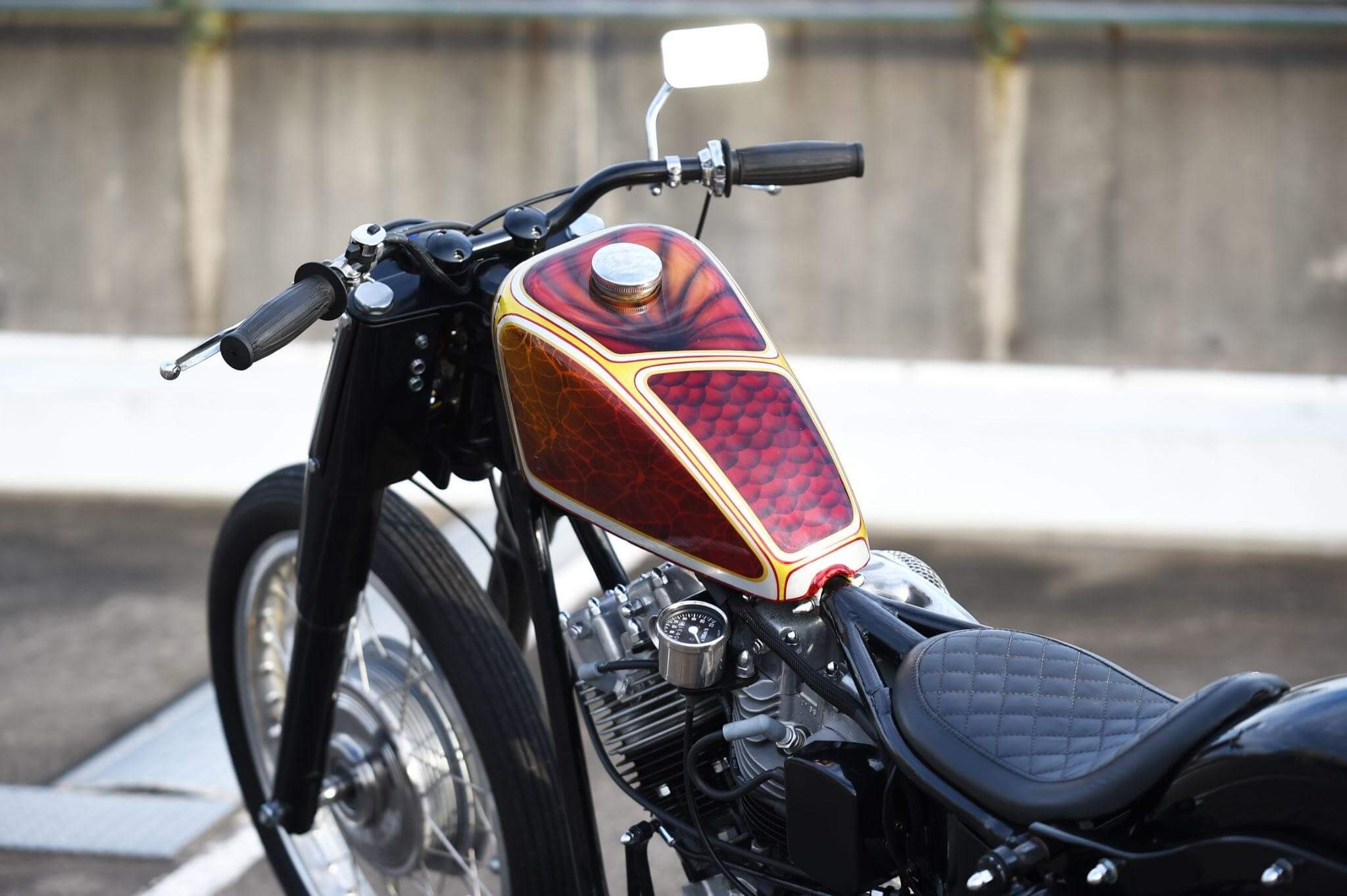Motorcycle fuel is one of the most essential parts of a motorcycle; without it, the bike can’t run—but what about the fuel tank? Just like every other major component of a bike, like the engine, brakes, and tyres, maintaining the fuel tank is integral for a smooth ride.
Improper maintenance and issues like a motorcycle fuel tank dent, rust, or leakage can cause problems in the long run. In severe cases, they can significantly impact a motorcycle’s performance, reliability, and safety. Maintaining a clean and rust-free fuel tank is just as important as regularly checking your motorcycle’s fluids and routinely inspecting brakes and tyres.
General Maintenance For Your Motorcycle’s Fuel Tank
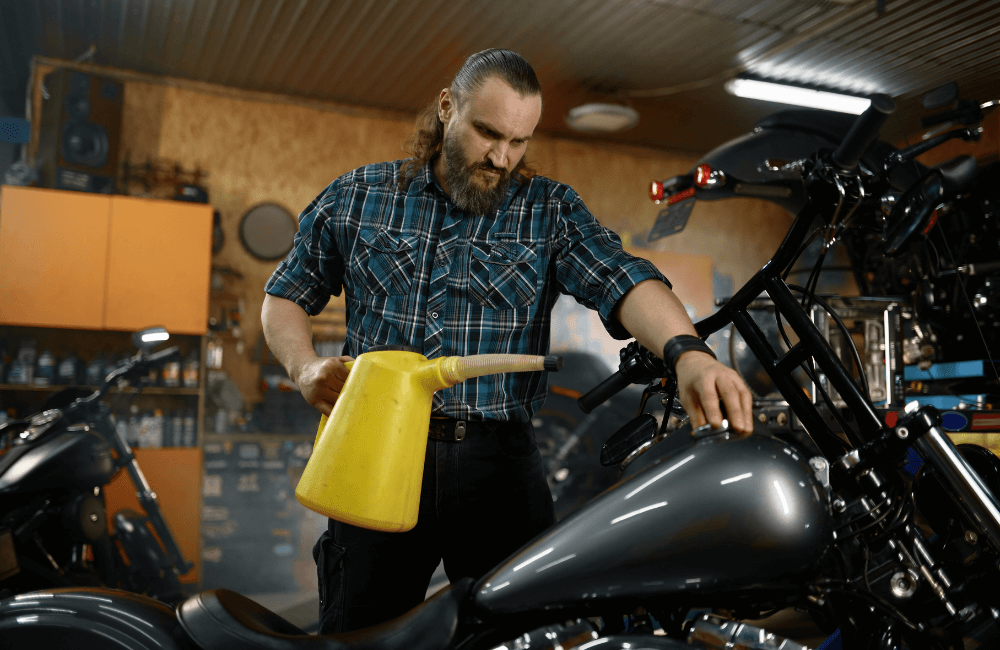
Before delving into general maintenance tips for the fuel tank, it’s important to outline the most common issues and how to prevent them. The main sources of problems for fuel tanks are typically rust, water, and tank leakage.
Combatting rust
The typical motorcycle fuel tank is made from metal and uses a galvanised steel construction. While galvanisation can help ward off rust, all steel eventually succumbs to corrosion due to condensation. When the fuel tank rusts, it impacts the fuel quality, engine, and combustion.
There are a few ways to help combat rust:
- Always fill your motorcycle’s tank when refuelling. This helps reduce condensation, as most of the tank material will be covered in fuel, lowering the risk of rust.
- When refuelling your motorcycle tank, always use the petrol recommended for your bike and a quality pump. Poor petrol or the wrong petrol type may contain contaminants and lead to rust.
- If you live in a humid area or an area where it often rains, always use water-resistant covers for your motorcycle or leave it undercover.
Water in the fuel tank
Water in a fuel tank can occur due to condensation or gaps in your motorcycle tank cap—water can get in when it rains. While small amounts of water can pass through your fuel system, more significant amounts can cause problems, especially in the long run.
The best steps to prevent water in the fuel tank are to always secure the tank cap, making sure it’s properly sealed and tightened. Whenever possible, also use waterproof covers or store your motorcycle under cover.
Tank leakage
Tank leakage is a common issue for motorcycles and can occur from rust, wear and tear, or other forms of damage. The best way to prevent tank leakage from ‘natural’ processes, like rust, is to follow the above mentioned tips.
How to maintain your fuel tank
The best way to maintain your fuel tank, along with doing routine inspections to ensure its top condition, is to stay on top of preventative measures, use fuel tank stabilisers, and clean the motorcycle tank regularly.
It’s recommended that your motorcycle’s fuel tank be cleaned at least once every year or every 19,000 kilometres, whichever comes first. Below, we’ve outlined the steps for cleaning your fuel tank to ensure it’s free of rust, debris, and contaminants.
- Disconnect the fuel tank from the motorcycle. Ensure you also disconnect any fuel lines and other connections.
- Use a siphon or simply drain the tank and safely dispose of the old fuel.
- Remove the petcock and other components from your fuel tank that the cleaning chemicals could damage.
- Before pouring cleaning chemicals into the tank, inspect and check for any rust or damage. If there is any rust, you may also need to perform rust removal.
- Start by cleaning the outside of the tank with warm water, then pour warm water into the tank and shake it to dislodge any loose debris.
- Drain the tank completely of any water after dislodging any loose debris.
- After draining all the water, use a specialised fuel tank cleaner to remove any residual contaminants, following the instructions on the cleaner.
- Depending on the tank cleaner used, some must sit and soak for an hour or more. After the tank has been soaked, drain it properly and dispose of the cleaner.
- Afterwards, you must properly dry your tank completely before using it again. You can do this by leaving it in a warm, dry area or drying it with compressed air.
- Before reconnecting your fuel tank and placing it back in your bike, conduct one last inspection to ensure any debris and rust (if you performed a rust clean) is gone.
- Reassemble the tank, reattach the petcock, fuel gauge sensor, and other components, and then reattach it to the motorcycle.
What To Do If Your Motorcycle Fuel Tank Needs To Be Repaired
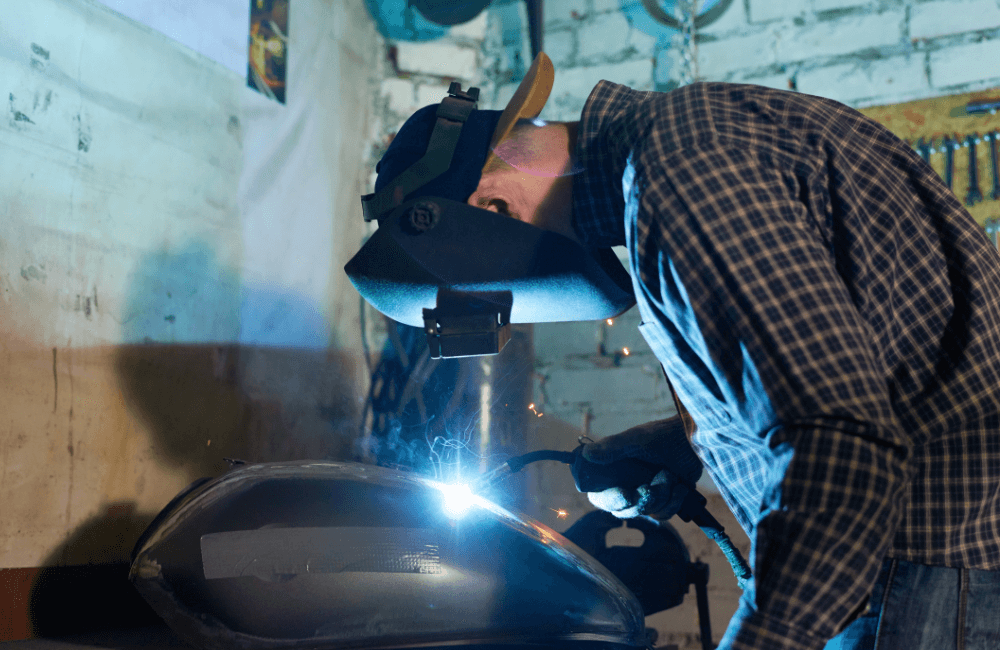
In most cases, motorcycle fuel tanks cannot be repaired, or it’ll be more cost-efficient to replace the tank and get a new one. If the issue with the tank is rust, it is possible to clean the tank, listed in the above section, and use a specialised formula for cleaning rust.
If the motorcycle tank has small rust pinholes, the only real cure is a new or second-hand replacement tank. Patching or soldering the small holes will only cause more damage, and in most cases, holes caused by rust on the outside of the tank mean the inside will be much worse.
If the motorcycle tank has a crack or puncture, it can be repaired by soldering or welding. However, it’s recommended that only a professional mechanic conducts this repair, as it can be dangerous and requires special tools.
Motorcycle fuel tank sealer kits can be used to repair small pinholes and cracks. The exact instructions will depend on the sealer kit type, but for most, they consist of coating the tank evenly with the sealant and leaving it to dry to reinforce and repair any holes or cracks.
When Does A Fuel Tank Need To Be Replaced?
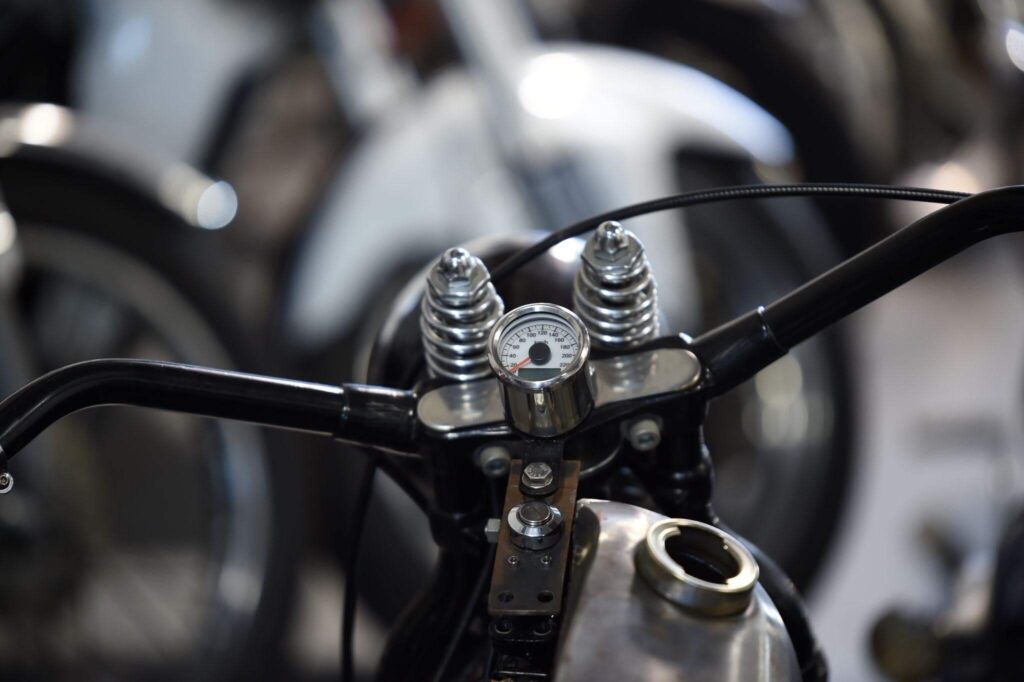
A motorcycle fuel tank will need to be replaced if it has significant damage, severe rust, or corrosion. Below are the key signs to look out for if a fuel tank needs replacing.
- Severe rust or corrosion—key indicators include flaking rust and/or pinholes.
- Persistent fuel leaks, even after using sealant or welding cracks. Key indicators for this include smells of gasoline, drops in fuel level, and fuel stains.
- Significant dents and/or warping indicate structural damage, which needs replacement.
- If a fuel tank has severe internal contamination, it’s time to replace it even after a deep clean.
Professional Servicing & Repair Work at Taverner Motorsports
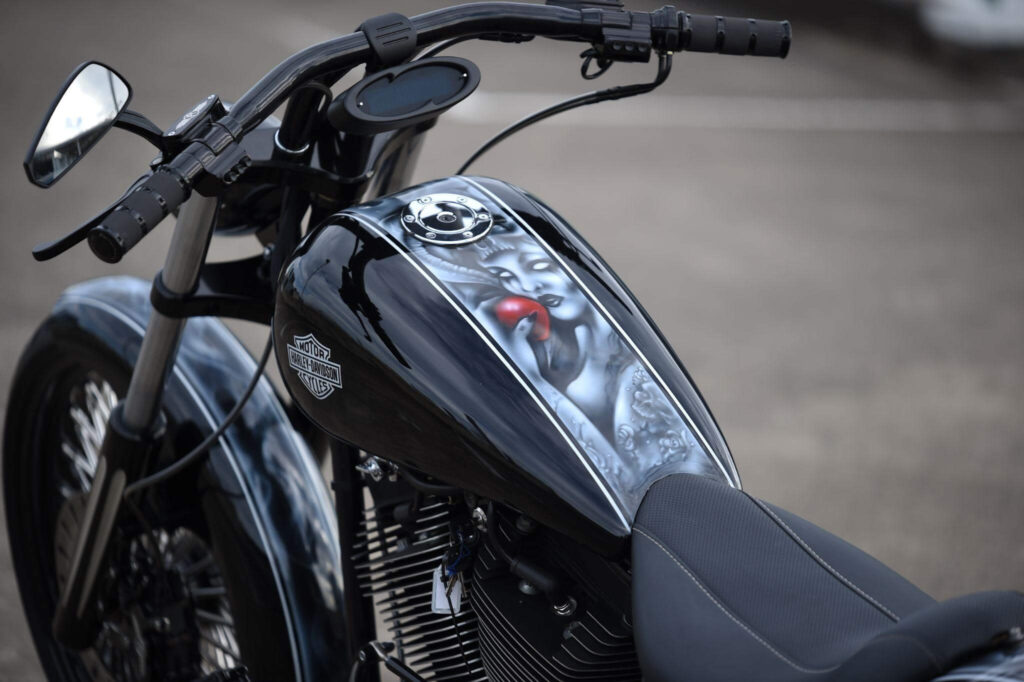
At Taverner Motorsports, we offer major repair work and routine servicing for most motorcycle models—with a passion for British and Harley-Davidson motorcycles. So, if you’re overdue for a major check-up or concerned about your motorcycle’s fuel tank and need a repair, we can help.
Our team has over 40 years of experience in the motorcycle industry, working on motorcycles of all makes and models, performing upgrades, modifications, and repairs. We also understand how important a bike can be to an owner—we’ll treat your motorcycle with the utmost respect and care.
When you come to us for work on your motorcycle, you can expect transparency from start to finish. Our team will inform you of any required repairs and estimated costs and give you a timeline for completion, keeping you updated at every step.
If you require professional servicing or repair work for your fuel tank, contact us and request a quote today. The Taverner Motorsports would love to help you with your bike and get you back on the road.
